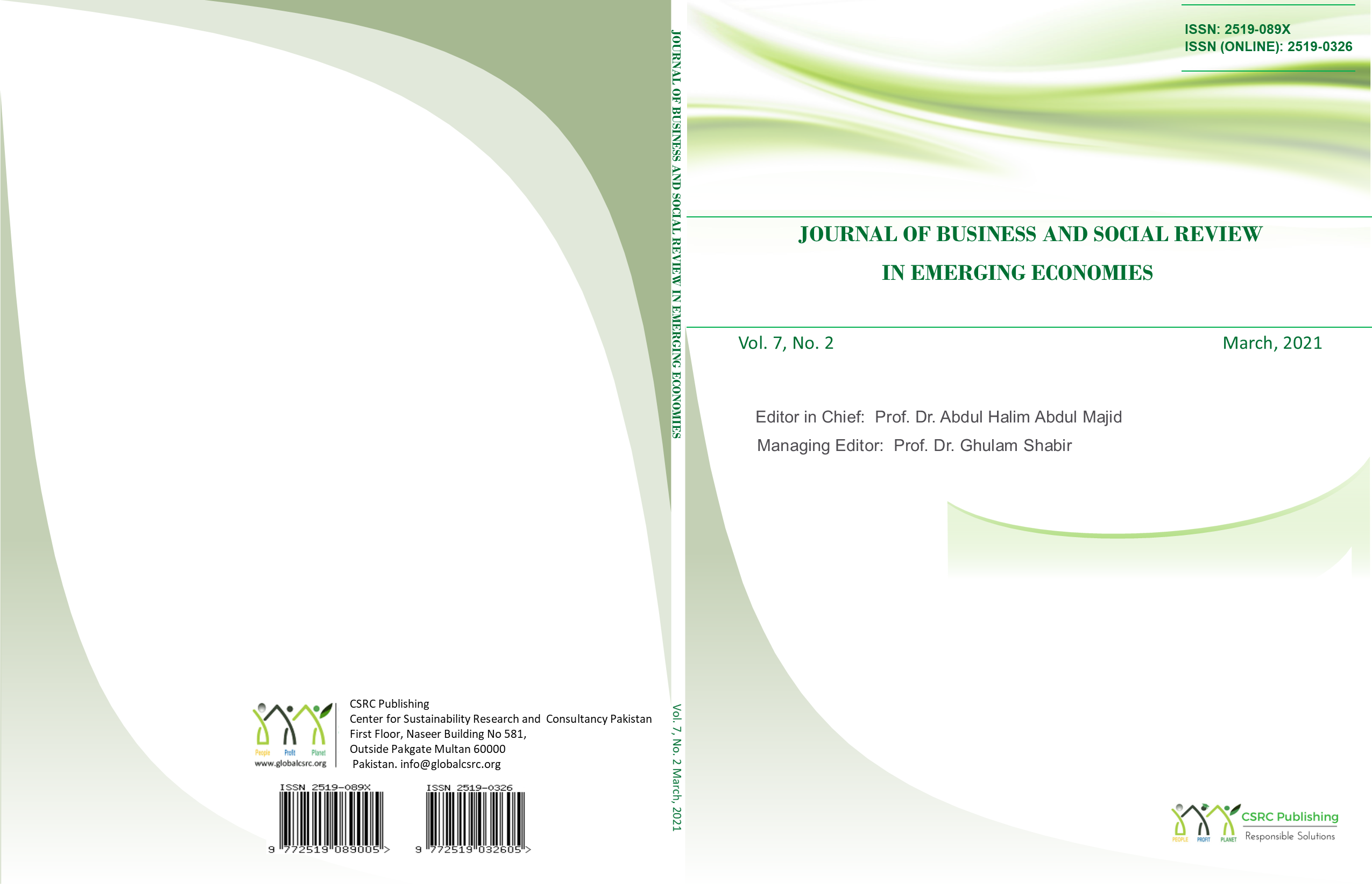Student’s Perception and Expectation Regarding Library Services Quality: A Case Study of a Public Multi Campus University of Punjab, Pakistan
Abstract
Purpose: The disparity between students' perceptions and expectations is measured in this study to determine the perceived service quality (SQ) of sample university’s academic library units.
Design/Methodology/Approach: Under the typology of quantitative approach survey method was used. The SERVQUAL instrument consisting of 22 items was adopted for assessing student's expectations and perceptions. The students enrolled in regular programmes of the academic year 2013-2014 were taken as population. Using stratified random sampling through proportional allocation, a sample of 372 respondents was designed. Data were analyzed quantitatively using descriptive statistics and qualitatively using NVIVO software for content of open-ended questions.
Findings: The results revealed that student's expectations were higher than their perception.
Implications/Originality/Value: Based on the findings, it was concluded that the concerned authorities may take initiatives to improve the library services provided by the library staff. In this way the students’ expectations can be met.
Downloads
Article Analytics Summary
References
Ameen, K. (2005). Developments in the philosophy of collection management: a historical
review.Collection Building, 24,112-116.doi: 10.1108/01604950510629264 DOI: https://doi.org/10.1108/01604950510629264
Andaleeb, S.S., & Simmonds, P.L., (1998). Explaining user satisfaction with academic
libraries: Strategic Implications. College & Research Libraries, 59(2), 156-167.
Awan, M.U., Azam, S., & Asif, M. (2006). Library service quality assessment. Journal of
Total Quality Management, 4(1), 51-64.
Babbie, E. (2002). The Practice of Social Research (8th ed). Belmont, CA: Cengage.
Calvert, P.J., & Hernon, P. (1997). Surveying service quality within university libraries. 408- DOI: https://doi.org/10.1016/S0099-1333(97)90041-0
.
Coleman, V., Xio, Yi (Daniel). & Bair, L., Chollett, B. (1997). Toward a TQM paradigm:
Using SERVQUAL to measure library service quality. College & Research Libraries,
(3), 237-249.
Cook, C. & Heath, F. (2001). User’s perceptions of Library Service Quality: A
LibQUAl+TM Qualitative Interview Study. Library Trends, 49(4), 548-584.
Cook, C., & Thompson, B. (2000). High Order Factor Analytic perspective on user’s
perceptions of library service quality. Library Information Science Research, 22, 393-
Cook, C., Thompson, B. (2000). Reliability and validity of SERVQUAL scores used to
evaluate perceptions of library service quality. Journal of Academic Librarianship,
, 248-258.
Crawford, J. (2000). Evaluation of Library Information Services (2nd ed). London Aslib
.
Crawford, J. (2006). The culture of evaluation in library and information services, Oxford: DOI: https://doi.org/10.1533/9781780630847
Chandos.
Cronin, J.J., & Taylor, S.A. (1992). Measuring Service Quality: A reexamination and DOI: https://doi.org/10.2307/1252296
extension. Journal of Marketing, 56(3), 55-68.
De Saez, E.E. (2000). Marketing concepts for libraries and information services (2nd ed.).London Facet Publishing.
Edwrads, S. and Browne, M (1995).Quality in Information Services: Do Users and Librarians differ in their expectations? Library and information Science Research 17,163-182. DOI: https://doi.org/10.1016/0740-8188(95)90020-9
Elliott K.M. (1995). A comparison of alternative measures of service quality: journal of customer service in Marketing and Management, 1(1), 35. DOI: https://doi.org/10.1300/J127v01n01_04
Evans, G.E., Ward, P. L., & Rudaas, B. (2000).Management basics for Information Professionals. New York Neal-Schuman Publishers, Inc.
Evans J. R., & Lindsay, W.M. (2004). The management and control of quality (5thed). Mason Ohio Thomson south western.
Green, S.S. (1876). Personal Relations between Librarians and Readers: Library Journal, 1, 74-81.
Haider, S J. (2004). Perspectives on Coping with Change: Issues facing University Libraries in Pakistan. The journal of academic librarianship .2(3), 229-236. DOI: https://doi.org/10.1016/j.acalib.2004.02.005
Harwood, N., & Budder, J. (1998) Student Expectations of and Satisfaction with the University library. The journal of academic librarianship 161-171. DOI: https://doi.org/10.1016/S0099-1333(98)90179-3
Heath, F., & Cook, C. (2003). SERVQUAL: Service Quality Assessment in libraries .In Encyclopedia of library and information science (2nd ed. Vols. 1-3, pp. 2613-2625).New York: Marcel Dekker.
Hernon, P. (2002).Quality: New Directions in the Research. The Journal of Academic Librarianship, 28(4), 224-231.
Hermon, P., & Altman, E. (1998). Assessing service quality satisfying the expectation of library customers. Chicago: American library Association.
Hernon, P. (2002).Quality: New Directions in the Research. The Journal of Academic Librarianship, 224-231. DOI: https://doi.org/10.1016/S0099-1333(02)00286-0
Hernon, P., & Nitecki, D.A. (2001). Service quality: A concept not fully explored. Library trends, 49(4) 687-708.
Hernon, P., Nitecki, D.A,. & Altman, E. (1999). Service quality and customer Satisfaction:
An Assessment for future directions. The journal of academic librarianship, 25(1), 9-
Jabeen, M. (2004). Lahore kay amity kata khan ki madi wa Tibee sahoolat. (Unpublished master’s thesis) University of the Punjab, Lahore.
Kent, A., lancour, H., and Daily, J.E (1978). Evaluation of library services. In encyclopedia of library and information science (Vols. 1-33, pp.317-320). New York: Marcel Dekker, Inc.
Copyright (c) 2021 Shakeela Shah, Shaheen Pasha, Ghazal Khalid Siddiqui, Muhammad Naeem Sarwar

This work is licensed under a Creative Commons Attribution-NonCommercial 4.0 International License.
CSRC Publishing and JBSEE adhere to Creative Commons Attribution-Non Commercial 4.0 International License. The authors submitting and publishing in JBSEE agree to the copyright policy under creative common license 4.0 (Attribution-Non Commercial 4.0 International). Under this license, the authors published in JBSEE retain the copyright including publishing rights of their scholarly work and agree to let others remix, tweak, and build upon their work non-commercially. All other authors using the content of SBSEE are required to cite author(s) and publisher in their work. CSRC Publishing and JBSEE follow an Open Access Policy for copyright and licensing.






